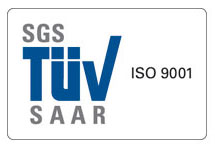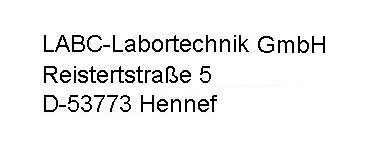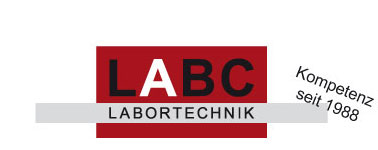"Sandwich Set-Up" for the Sieg-Mi-Flex
"Sandwich arrangements" for the Sieg-Mi-Flex Migration Cell are understood to mean that two equal-sized Central Rings are clamped between a fixing plate set. Among other things, this setup allows you to perform barrier tests with print patterns. The test set-up requires extended threaded screws and optionally a centering ring. The centering ring is currently only available in DN120.
ŌĆ×Sandwich Set-UpŌĆ£ without centring ring
For the ŌĆ£Sandwich Set-UpŌĆØ without centring ring, in addition to a second Central Ring another set of extension connectors is needed to double the size of the reaction chamber in order to achieve two tightly sealed reaction chambers with the characteristically-defined surfaces and volumes.
Two laterally attached GL14 screw fittings on the Central Ring (sealed, e. g. with GL14 perforated caps and inserted septa), create two fittings (inlet and outlet) to each of the two steam areas formed by the connection of the fixing plate set and the fitting of a test sample film between the two Central Rings.
The ŌĆ£Sandwich Set-UpŌĆØ of the Siegwerk (Sieg-Mi-Flex) Migration Cell System can be used in a temperature range of -15 ┬░C to 180 ┬░C. The test specimen does not need to be precisely cut out for this test setup, and can protrude slightly past the Central Ring.
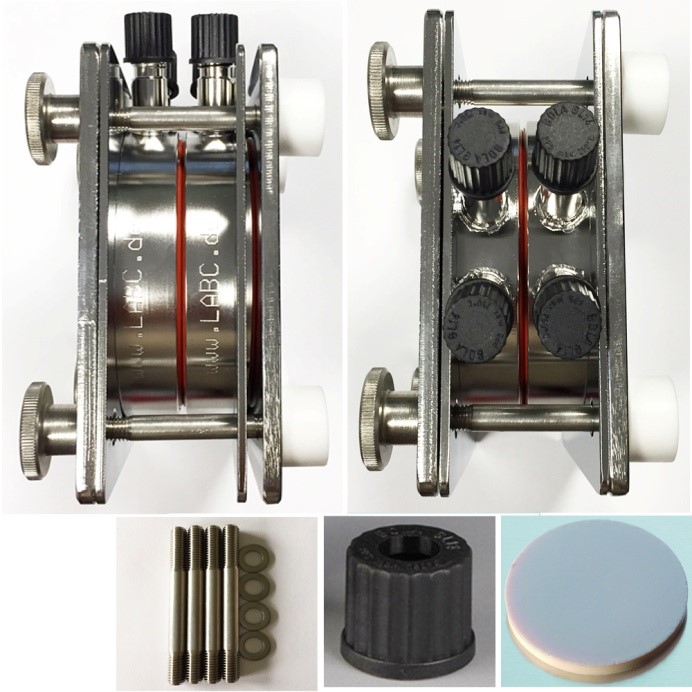
ŌĆ×Sandwich Set-UpŌĆ£ with centring ring
For the ŌĆ£Sandwich Set-UpŌĆØ with a stainless steel centring ring, in addition to a second Central Ring and a centring ring, another set of extension connectors is also needed to double the size of the reaction chamber in order to achieve two tightly sealed reaction chambers with the characteristicallydefined surfaces and volumes.
2 x laterally attached GL14 screw fittings on the Central Ring, sealed with GL14 perforated caps and inserted septa, for example, create two fittings (inlet and outlet) to each of the two steam areas formed by the connection of the fixing plate set and the fitting of a test sample film between the centring ring and a Central Ring.
In the ŌĆ£Sandwich Set-UpŌĆØ, in order to also reduce the dead volume the centre ring can be employed without the 2 x lateral GL14 screw fittings. The ŌĆ£Sandwich Set-UpŌĆØ with stainless steel centring ring of the Siegwerk (Sieg-Mi-Flex) Migration Cell System can be used in a temperature range of -15 ┬░C to 180 ┬░C. The test specimen must be precisely cut out for this test setup.
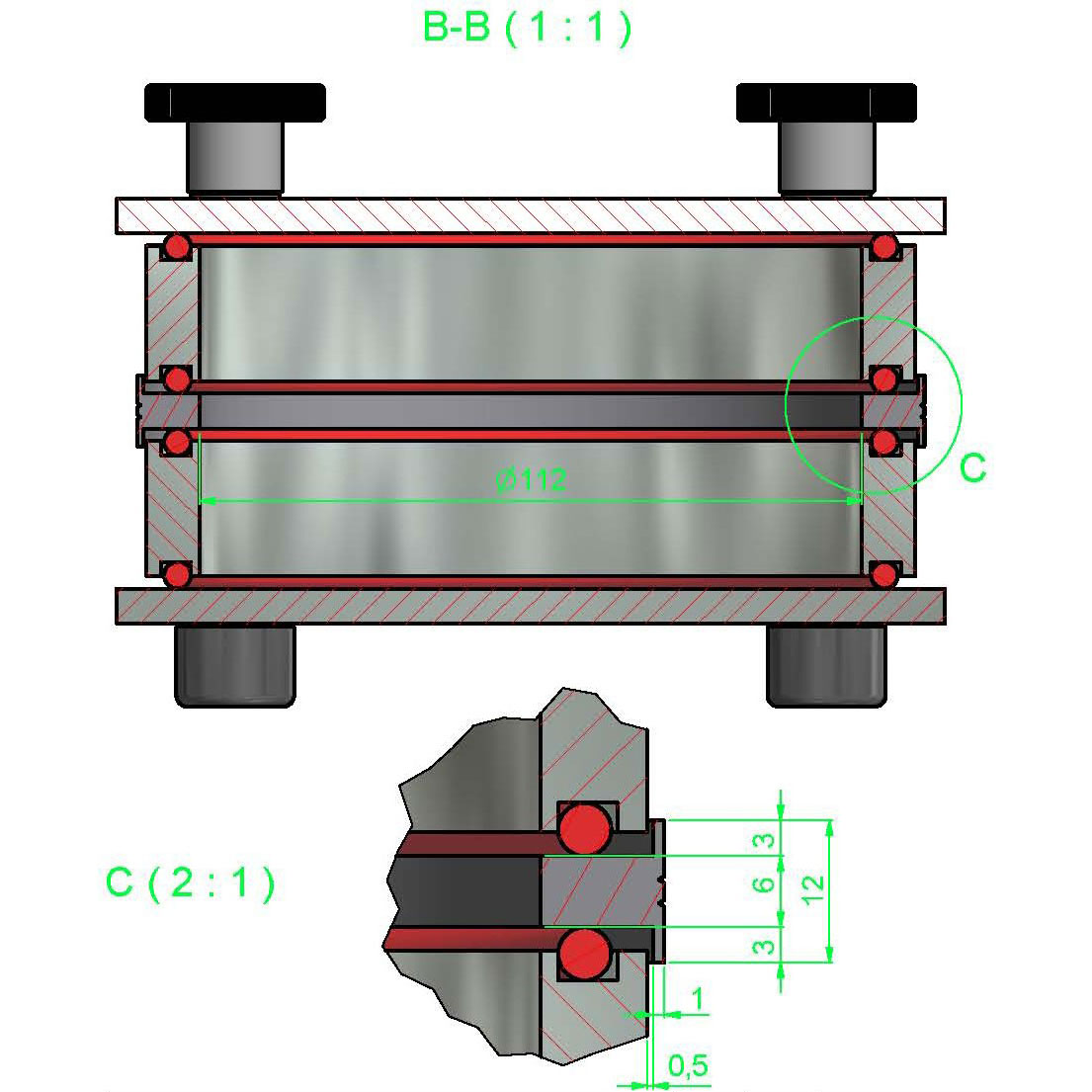
Combination ŌĆ×Sandwich Set-UpŌĆ£ with centring ring
for a migration test with TENAX® without direct contact with the package
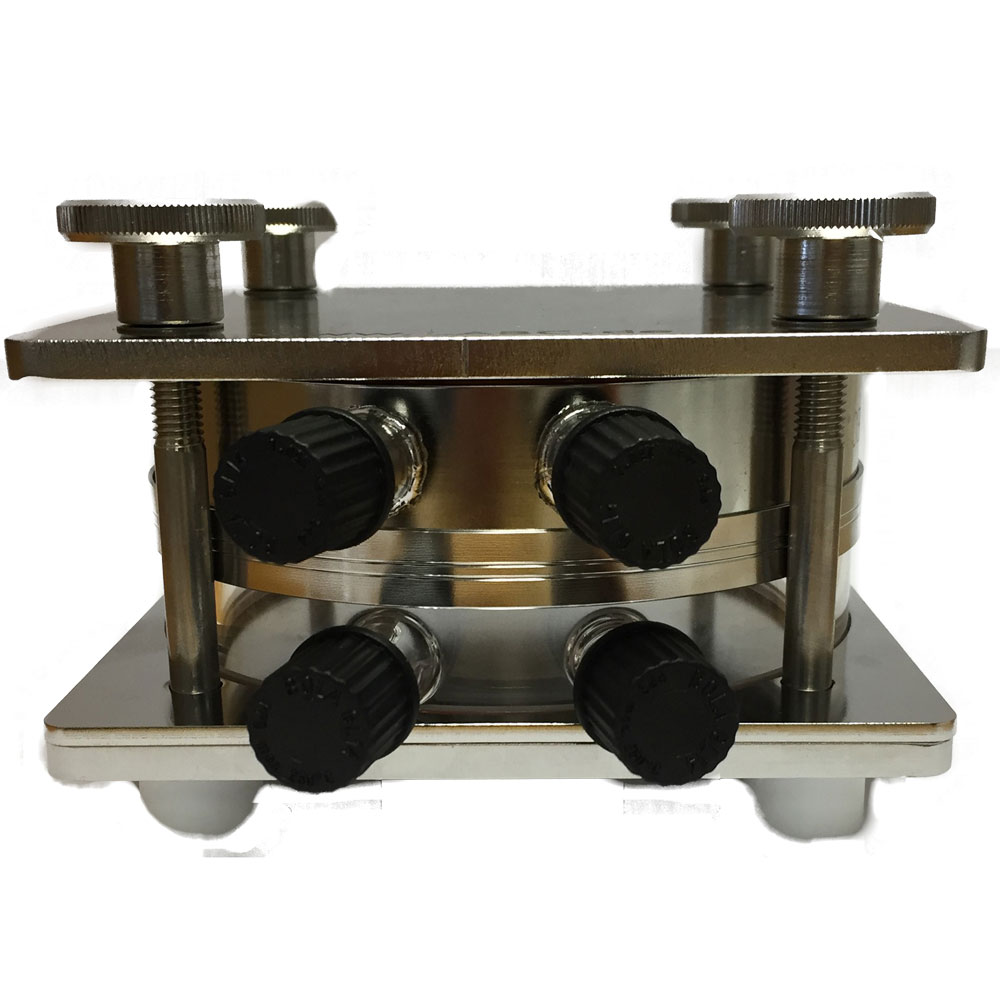
The test setup depicted in the figure tests the mass transfer through an open space from a packaging test specimen (fixed centrally in the centring ring!) to the TENAX® distributed on the bottom of the cells.
The ŌĆ£Sandwich Set-UpŌĆØ also allows one to combine components of the Sieg-Mi-Flex system consisting of borosilicate glass and stainless steel and thereby to be able to flexibly adapt to a particular situation (temperature-resistant from -15 ┬░C to 130 ┬░C, pressure seal up to 1 bar).
Additional components needed for a ŌĆ£Sandwich Set-UpŌĆØ of the Migration Cell System-Siegwerk (Sieg-Mi-Flex)
Stud bolt set VA 1.4571 (the ŌĆ£extension connectorsŌĆØ! length: 109 mm) consisting of:
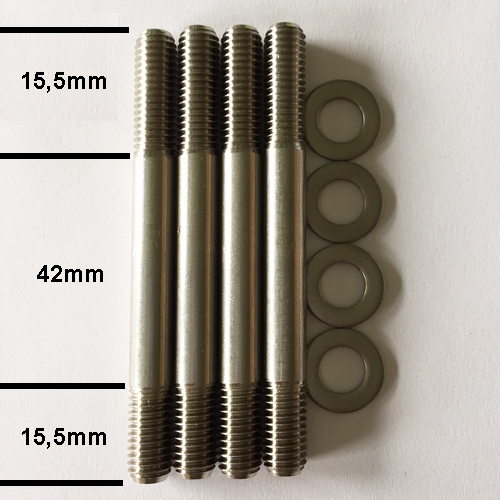
Item No. 250-0584258
- 4 x M8 stud bolts and 4 x M8 stainless steel spring collars for use in the Siegwerk (Sieg-Mi-Flex) Migration Cell System with the fixing plate set
b) for doubling the ŌĆ£Sandwich Set-UpŌĆØ reaction chamber with and without centring ring by arranging 2 stainless steel or borosilicate glass Central Rings one atop the other
Packaging unit = 4 each
DN120 centring ring and film holder:
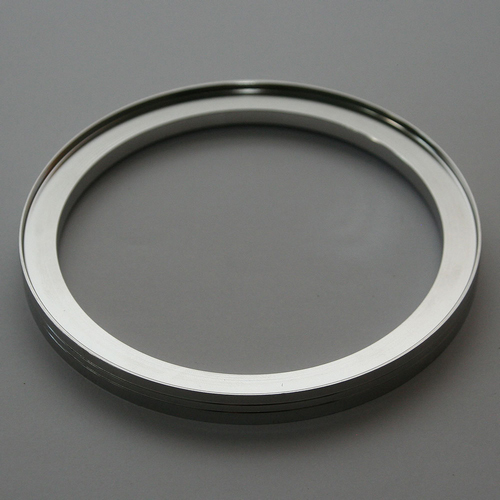
Item No.: 250-0591782
(for the inner bag barrier test and sandwich arrangement, for example)
Necessity: optional
Made out of stainless steel VA 1.4571 and inner diameter of 112 mm +/-0.1 mm as an intermediate ring for 2 DN120 centre rings. Fit all DN120 Central Rings (including or not including the filling/pouring fittings!)
Packaging unit = 1 each
Migra spring clamp for fastening a positioning aid for the Central Ring :
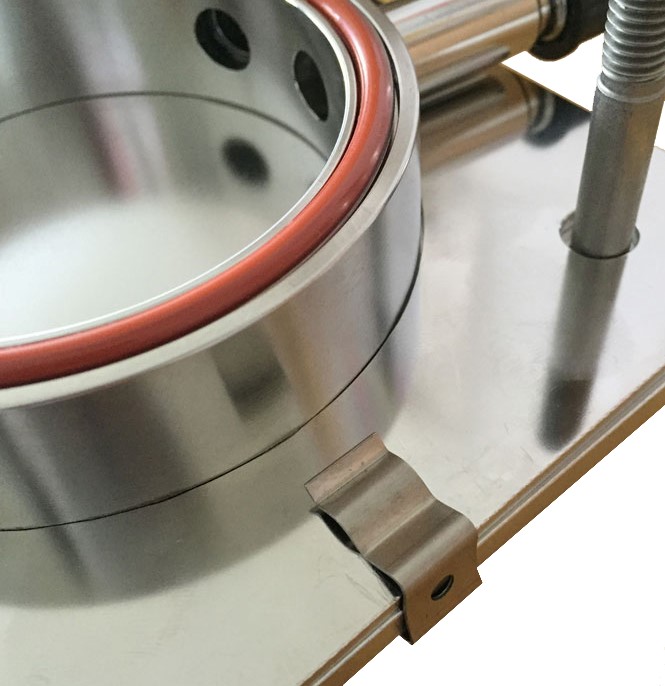
Item No. 130-0668255
Necessity: optional
Made out of V2A (1.4301, 3 mm thickness) to a fixing plate, Siegwerk (Sieg-Mi-Flex) system
Packaging unit = 1 each
Migra screw perforated cap closure:
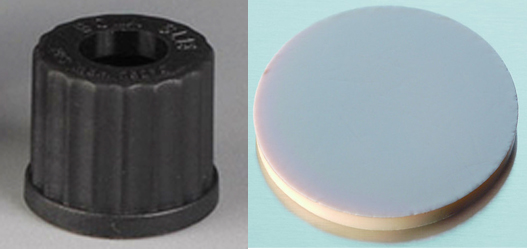
Item No.: 120-0592109
Necessity: optional
With easy-to-grip PPS edging, black, GL 14 with hole (├ś 9.2 mm) and silicone/PTFE gasket (approx. 3 mm thickness)
Packaging unit = 1 each
Further testing of mass transfers with the ŌĆ£Sandwich Set-UpŌĆØ test setup in the headspace:
- The headspace of the food contact side of packaging versus the outside can be tested simultaneously (the film to be tested (test sample) is positioned between the two Central Rings and clamped into place)
- The barrier effect (permeation) of inner bags in folding cardboard boxes can be tested in the headspace. The boxŌĆÖs cardboard (donator) is placed between a fixing plate and a centre ring and the inner bag film (test sample) to be tested is positioned between the two centre rings and clamped into place
- The barrier effect of ŌĆ£cardboard boxesŌĆØ (coated cardboard) can be tested with the option of analysing the food contact side versus the outside. The test sample is positioned between the two centre rings and clamped into place
- The barrier properties (permeation)(H20, CO2, N2, O2) of composite packaging can be tested
When using the ŌĆ£Sandwich Set-UpŌĆØ test setup, sample preparation generally occurs without a food simulant matrix although liquid or solid simulants can also be used here as well. The sampling and accumulation from the test space/spaces optionally occurs using an inert carrier gas that rinses the steam space(s) and concentrates the volatile substances on a TENAX┬« adsorption tube. The analysis then occurs using thermal desorption and GC/MS or GC/TOF.
A further method uses the adsorbent SPME (solid phase microextraction), for example 24 h at RT SPME fibre holder with Stableflex/SS and Carboxen/PDMS.
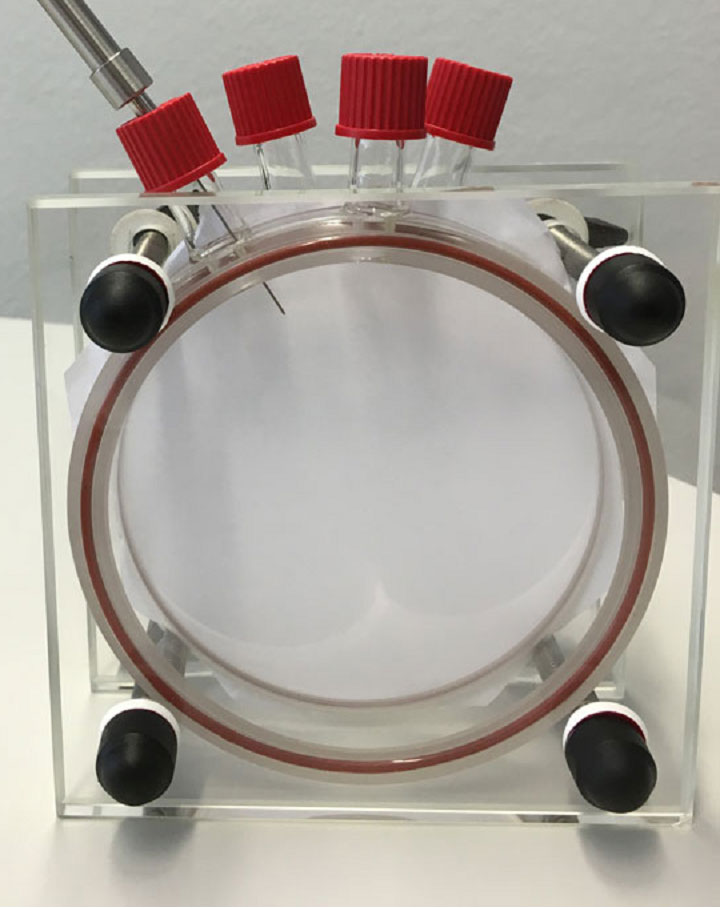
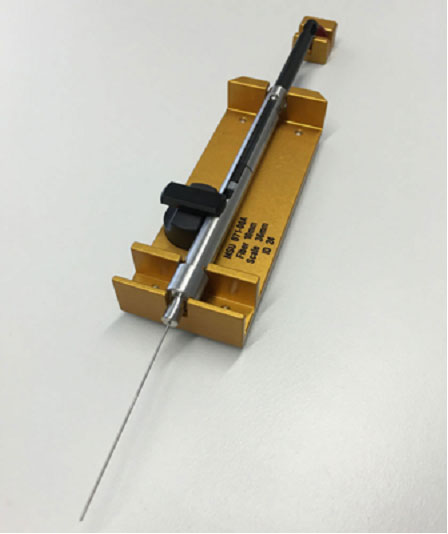
Next, we would like to introduce a new method for trace analysis with the disposable universal adsorber PowerSorb . The disposable polymer PowerSorb has excellent analytical capabilities and has been specially developed for thermal desorption applications or for solvent solvent extraction. For more information, see here .
